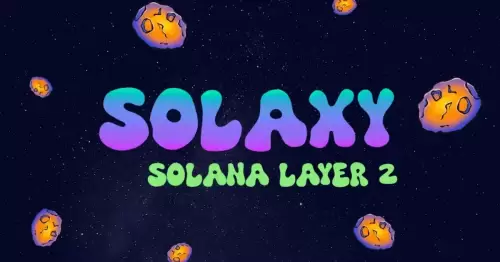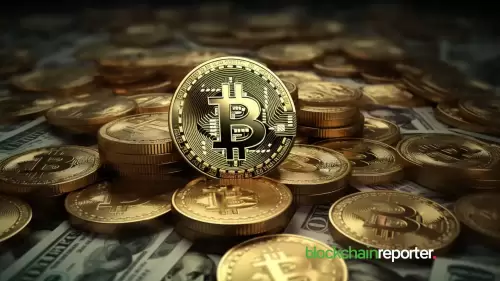 |
|
 |
|
 |
|
 |
|
 |
|
 |
|
 |
|
 |
|
 |
|
 |
|
 |
|
 |
|
 |
|
 |
|
 |
|
Cryptocurrency News Articles
The Ongoing Debate Surrounding the Potential Removal of the OP_Return Policy Limit in Bitcoin Core
May 10, 2025 at 07:45 am
The recent ongoing debate over the potential removal of the OP_Return policy limit in Bitcoin Core has raised concerns in the cryptocurrency community.

Recently, there has been an ongoing debate in the cryptocurrency community over the potential removal of the OP_Return payload size policy limit in Bitcoin Core.
As Bitcoin mining is becoming increasingly industrialized, the proposal to eliminate the OP_Return limit has gained some support. However, others have expressed concerns that it could lead to unintended consequences.
Now, BitMEX Research is arguing that removing the OP_Return limit can be beneficial for making Bitcoin’s mempool more useful, enabling users to set appropriate Bitcoin transaction fees and ultimately improve the network functionality.
What Is The OP_Return Policy and Its Impact on Bitcoin’s Mempool?
The OP_Return output type in Bitcoin Core is programmed to hold arbitrary data in Bitcoin’s blockchain. Bitcoin Core currently has an output size restriction, which stops nodes from relaying transactions that exceed the limit.
However, this is not a consensus rule, and blocks with such transactions are still considered valid. Some have argued that limiting the size of the blockchain will help prevent spam and unnecessary bloat, ensuring that Bitcoin maintains focus on financial transactions and not other data like pictures or text.
Conversely, BitMEX Research highlights the already booming demand for data storage capacity within Bitcoin’s blockchain with Ordinals, an initiative that focuses on storing images in the blockchain. This trend, which started earlier in 2023, has been rapidly gaining momentum throughout the year.
As a result, millions of dollars have been invested in transaction fees for these non-financial data transactions. While some deem these transactions as spam, BitMEX notes that the value of these transactions is subjective and should ultimately be decided by the market.
Economic Realities of Bitcoin Mining and Blockspace Markets
BitMEX Research further argues that Bitcoin miners, who are ultimately driven by profit, will always aim to maximize their revenue. With the emergence of Ordinals and similar initiatives, miners have discovered a lucrative way to generate fees from non-standard transactions.
The research firm explains that removing the OP_Return limit could help align the mempool with the economic reality of blockspace markets. In essence, miners would continue to include non-financial transactions, such as images, in their blocks if they generate higher fees.
If the OP_Return limit remains in place, BitMEX warns that miners may be forced to circumvent the mempool and develop proprietary solutions to accept non-standard transactions directly. This, in turn, could lead to greater centralization as smaller miners wouldn’t have the capacity to compete with larger pools and mining businesses.
In contrast, removing the OP_Return limit would render the mempool competitive, and what the actual miners will be able to mine, therefore helping maintain faster block propagation and reduce incentives for miners to adopt private, centralizing alternatives.
Node Runners and the Future of Bitcoin’s Transaction System
Node runners, who operate the decentralized nodes that validate Bitcoin transactions, would also benefit from removing the OP_Return limit. By eliminating this restriction, Bitcoin’s blockchain would be better equipped to handle non-financial data without placing undue pressure on nodes. It’s important to note that OP_Return outputs do not contribute to the inflation of the UTXO set, and blocks containing such outputs would still be readily manageable by nodes.
BitMEX Research concludes that the economic success of Bitcoin hinges on a functional mempool and a transaction selection algorithm that benefits the miner. Eliminating the OP_Return limit would be crucial in ensuring that this mempool is efficient and competitive.
As the demand for blockspace within Bitcoin increases and initiatives like Ordinals drive the integration of non-financial transactions, it may be a propitious time for Bitcoin Core to adjust and accommodate these changes for better management of transaction fees and block propagation.
Disclaimer:info@kdj.com
The information provided is not trading advice. kdj.com does not assume any responsibility for any investments made based on the information provided in this article. Cryptocurrencies are highly volatile and it is highly recommended that you invest with caution after thorough research!
If you believe that the content used on this website infringes your copyright, please contact us immediately (info@kdj.com) and we will delete it promptly.
-

-

-

-

-

-

- The arrival of tokenized public equities on Solana signals a new era for blockchain finance and a breakout moment for Solana Layer 2 project, Solaxy.
- May 10, 2025 at 11:35 am
- This week, Superstate CEO Robert Leshner unveiled a game-changing platform called Opening Bell, a system designed to bring traditional equities
-

-

- The impact of the tariff war from the U.S. is easing and the virtual currency market is shaking again.
- May 10, 2025 at 11:30 am
- Bitcoin, the cryptocurrency market leader, has surpassed the $100,000 mark again since February, and Ethereum, the second-largest market capitalization, has also risen sharply.
-






























































